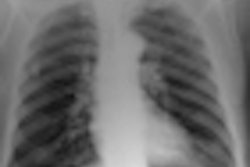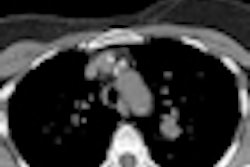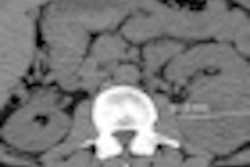
A nearly decadelong lung cancer chest x-ray screening program of at-risk residents of the Varese province in Italy reduced the number of deaths attributed to lung cancer by 18%, according to findings published online in Lung Cancer. This study offers new insights of the value of chest radiographs as a low cost screening tool.
No public policy organization recommends chest x-ray screening for lung cancer. Low-dose CT screening has repeatedly proven to be the most effective imaging modality to monitor suspicious lung nodules and to diagnose cancer.
But when resources are not available to implement a lung cancer screening program, can a chest radiograph-based screening program be substituted for at-risk individuals? A multidisciplinary team of Northern Italian researchers think so (Lung Cancer, 4 January 2013).
In 1997, Dr. Lorenzo Dominioni of the Center for Thoracic Surgery of the University of Insubria Ospedale di Circolo in Varese and co-authors started a nonrandomized population-based observational study of chest x-ray screening of smokers living in the Varese Province. They invited the 5,815 men and women aged 45 to 75 years and who had smoked at least 10 pack years to participate. These individuals lived in 50 specific communities out of a total of 230 communities in the region. The participants would receive an annual chest x-ray for five consecutive years.
A total of 1,244 individuals living in all 50 rural and urban communities enrolled in the study during a 4.5 year recruitment period. An additional 1,221 individuals who lived in the province but not in one of the 50 communities also requested to participate when they learned of the program. (They were added to the lung cancer screening program and monitored separately, but data of their health and mortality outcomes are not included in this study because they were not matched with a reference cohort at the time.)
The 1,244 invited enrollees were matched by a reference population of similarly aged smokers who had a median smoking history of 22.8 to 46 pack years and resided in the 50 communities. Additionally, the populations of smokers and nonsmokers in 230 communities of a 44-town catchment area were statistically analyzed with respect to the regional population mortality rates between 1999 and 2006.
During this time period, 172 individuals participating in the study died of lung cancer. A total of 210 lung cancer deaths were expected based on the mortality rate of the reference population. Additionally, there were fewer deaths from lung cancer in the study group each consecutive year of participation.
The authors pointed out the outcomes of peer-reviewed published clinical trials of chest x-ray lung cancer screening programs were quite dissimilar and for the most part, negative. They suggested their real-world study approach to invite every resident who qualified may have been more realistic than a randomized or more enrollment-restricted approach.
They also acknowledged outcomes could have been impacted if the general practitioners of the participants gave these patients better standard care than their smoking patients who were not participating. The study may also have stimulated improvements in cancer treatment in the Varese Province.
But regardless, the implementation of a lung cancer chest x-ray screening program at a community level was associated with a significant reduction of lung cancer mortality among smokers.
To determine if such a program is relevant to public health policy in Italy, the next step this research group will undertake is a comprehensive cost-benefit analysis.



















